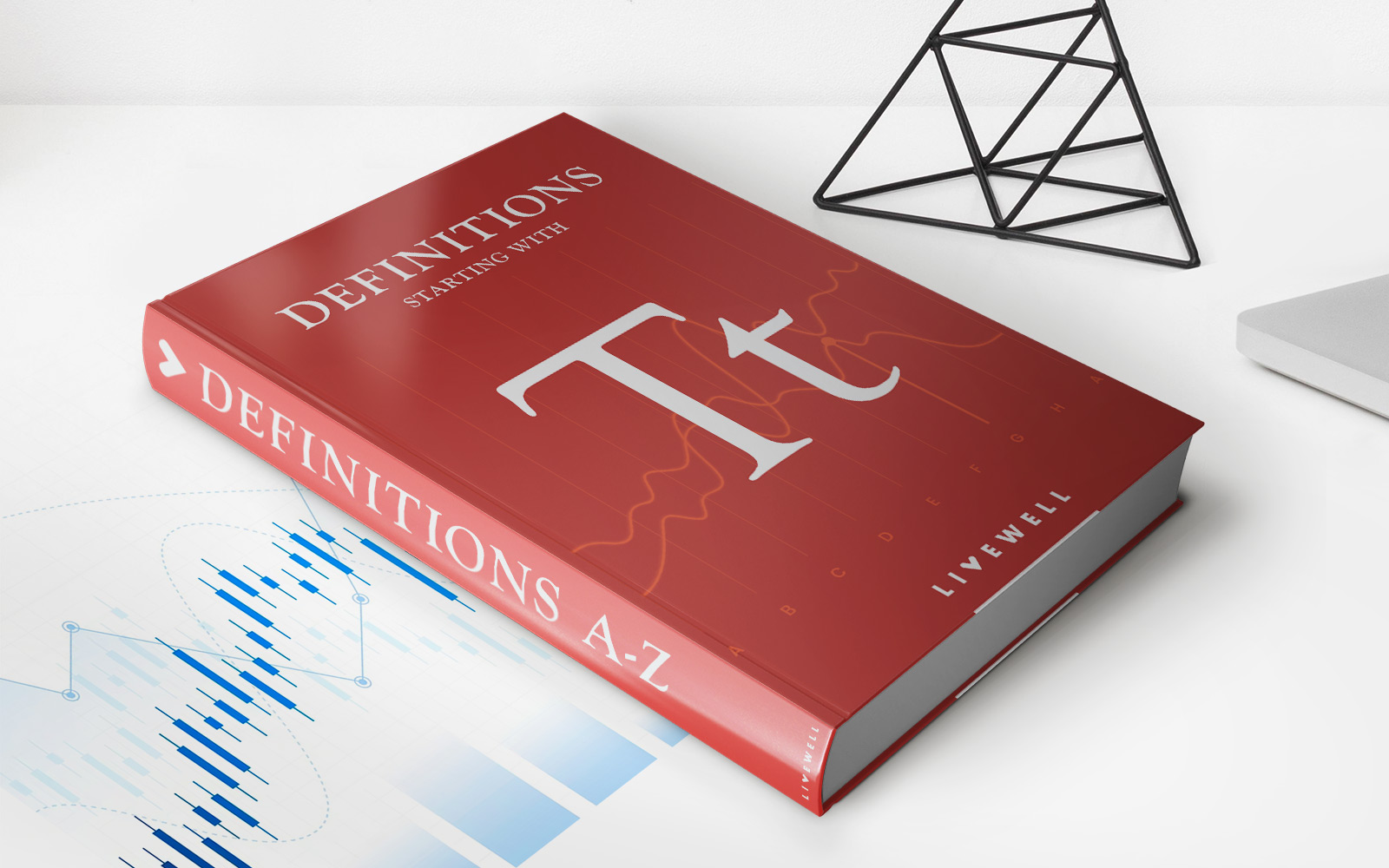

Finance
What Is An Insurance Binder For A Car?
Modified: December 30, 2023
Learn what an insurance binder for a car is and how it relates to finance. Get the essential details on this important aspect of car insurance.
(Many of the links in this article redirect to a specific reviewed product. Your purchase of these products through affiliate links helps to generate commission for LiveWell, at no extra cost. Learn more)
Table of Contents
“
Introduction
When it comes to insuring your car, understanding the terminology and processes involved can be overwhelming. One term that you may come across is an ‘insurance binder’. But what exactly is an insurance binder for a car?
An insurance binder is a temporary document that serves as proof of insurance coverage until the full policy is issued. It is commonly used when a new insurance policy is being put into effect or when changes are made to an existing policy. The binder acts as a temporary contract between the insurance company and the insured, providing coverage until all the necessary paperwork is completed and a formal policy is issued.
The purpose of an insurance binder is to protect both the insurance company and the policyholder during the interim period. It ensures that the policyholder has some level of coverage even before the formal policy is finalized, reducing the risk of being uninsured during this time.
Understanding how an insurance binder works and the coverage it provides is essential for car owners. In this article, we will delve deeper into the concept of an insurance binder for a car, discussing its purpose, how it works, the coverage it offers, how to obtain one, and its overall importance in ensuring proper insurance protection.
”
“
Definition of an Insurance Binder for a Car
An insurance binder for a car is a temporary agreement between the insurance company and the policyholder that provides proof of insurance coverage until the formal insurance policy is issued. It is a legally binding document that outlines the terms and conditions of the coverage, including the types of coverage, limits, deductibles, and any additional provisions specific to the policyholder’s needs.
The insurance binder is typically provided by the insurance company or agent upon the initiation of a new policy or when changes are made to an existing policy. It serves as a temporary solution to bridge the gap between applying for insurance and receiving the formal policy documents. The binder ensures that the policyholder has immediate coverage in place and can legally operate their vehicle while waiting for the formal policy to be processed.
It is important to note that the insurance binder for a car is not a substitute for the actual insurance policy. Rather, it acts as a temporary contract that provides temporary coverage until the formal policy is issued. Once the policy is issued, it replaces the binder, and the terms and conditions outlined in the policy take effect.
Insurance binders are commonly used in situations such as purchasing a new vehicle, when a policyholder switches insurance providers, or when modifications are made to an existing policy. They are designed to provide temporary coverage and peace of mind for both the policyholder and the insurance company during the transition period.
”
“
Purpose of an Insurance Binder
The primary purpose of an insurance binder is to provide temporary coverage and proof of insurance until the formal policy documents are issued. It serves as a valuable solution during the interim period, ensuring that policyholders are protected and compliant with legal requirements while waiting for the full policy to be processed.
One of the key purposes of an insurance binder is to protect the policyholder from potential financial losses in the event of an accident or other covered incident. Without a binder, the policyholder would be left without any insurance coverage, leaving them financially vulnerable.
Additionally, the insurance binder also protects the insurance company by establishing the terms and conditions of coverage while the formal policy is being prepared. It ensures that the policyholder receives temporary coverage based on the agreed-upon terms, preventing any disputes or discrepancies that may arise during the insurance application process.
An insurance binder is also crucial for fulfilling legal requirements. In many jurisdictions, it is mandatory to have proof of insurance coverage to legally operate a vehicle. The binder serves as temporary proof of insurance until the formal policy is issued, allowing policyholders to comply with these legal obligations without delay.
Furthermore, an insurance binder can provide reassurance and peace of mind for policyholders. It allows them to have immediate coverage in place, ensuring they are protected from potential losses or liabilities while waiting for the formal policy documentation to be processed. This is particularly important for individuals who are purchasing a new vehicle and need immediate coverage or those who are in the process of switching insurance providers.
In summary, the purpose of an insurance binder is to provide temporary coverage and proof of insurance during the interim period until the formal policy is issued. It protects both the policyholder and the insurance company, fulfills legal requirements, and provides peace of mind for policyholders.
“
“
How an Insurance Binder Works
Understanding how an insurance binder works is essential for car owners who find themselves in need of temporary coverage while waiting for their formal insurance policy. Here is a breakdown of how an insurance binder operates:
- Initiating the Binder: When you apply for car insurance or make changes to an existing policy, your insurance company or agent may issue an insurance binder. The binder is typically provided to you either in physical or electronic format and includes important details such as your name, policy number, effective date, and expiration date.
- Coverage Details: The insurance binder outlines the coverage you have and the specific terms and conditions that apply during the binder period. It includes information on the types of coverage provided, such as liability coverage, comprehensive coverage, collision coverage, and any additional coverage options you may have selected.
- Duration of Coverage: An insurance binder is a temporary solution and has a specific duration of coverage. The duration may vary depending on the insurance company and individual circumstances but is typically valid for 30 to 90 days. It is crucial to be aware of the expiration date of the binder to avoid any lapses in coverage.
- Binding Agreement: Once the insurance binder is issued, it becomes a binding agreement between you (the policyholder) and the insurance company. This means that both parties are obligated to fulfill the terms and conditions outlined in the binder until the full policy is issued.
- Transition to Formal Policy: The insurance binder serves as a temporary solution while the insurance company processes your formal policy. Once the policy is ready, it replaces the binder, and the terms and conditions outlined in the policy take effect. You will receive the formal policy documents, which will provide you with long-term coverage.
It is important to note that an insurance binder can be modified or canceled by either party before the formal policy is issued. For example, if you make changes to your coverage or decide to cancel the policy during the binder period, the insurance company will issue a new binder reflecting the updated information or notify you of the policy cancellation.
Overall, an insurance binder acts as a temporary contract that provides coverage until the formal policy documents are issued. It operates as a binding agreement, specifying the coverage details and duration, and ensures that you have temporary coverage in place while waiting for the full policy to be processed.
“
“
Coverage provided by an Insurance Binder
An insurance binder provides temporary coverage for your car until the formal insurance policy is issued. The coverage provided by the binder is typically similar to what would be offered in the final policy, although there may be some limitations or differences. Here are the common types of coverage that may be included in an insurance binder:
- Liability Coverage: Liability coverage is a fundamental component of car insurance. It covers you in case you are legally responsible for causing injury or property damage to someone else. An insurance binder usually includes liability coverage and specifies the limits of coverage for bodily injury and property damage.
- Comprehensive Coverage: Comprehensive coverage protects your vehicle from damages not caused by a collision. This can include theft, vandalism, weather-related incidents, or hitting an animal. The binder may provide temporary comprehensive coverage until the formal policy is issued.
- Collision Coverage: Collision coverage covers the cost of repairing or replacing your vehicle if it is damaged in a collision with another vehicle or object. If you have collision coverage, the binder may include temporary coverage for collision damages.
- Uninsured/Underinsured Motorist Coverage: This coverage protects you if you are involved in an accident with a driver who doesn’t have insurance or doesn’t have enough coverage to fully compensate for your losses. An insurance binder may include this coverage, providing temporary protection until the formal policy is issued.
- Additional Coverage: Depending on your specific insurance needs, the insurance binder may include additional coverage options such as medical payments coverage, roadside assistance, rental car reimbursement, or loan/lease gap coverage. These additional coverages provide extra protection and can be specified in the binder.
It is important to review the coverage details provided in the insurance binder to understand the specific limits, deductibles, and exclusions that apply during the interim period. This will help you ensure that you have adequate protection and prevent any surprises or misunderstandings regarding your coverage.
Remember, the coverage provided by an insurance binder is temporary and will be replaced by the formal policy once it is issued. If you have any questions about the coverage provided in the binder, it is advisable to contact your insurance agent for clarification.
”
“
Duration of an Insurance Binder
The duration of an insurance binder typically ranges from 30 to 90 days, although it can vary depending on the insurance company and individual circumstances. It is important to be aware of the expiration date of the binder to avoid any lapses in coverage.
The binder period starts on the effective date stated in the document, and coverage remains in force until the expiration date mentioned. It is crucial to note that once the binder expires, it no longer provides coverage, and the formal policy should be in place to maintain continuous insurance protection.
The duration of the binder is essential because it provides temporary coverage during the period when the insurance company is processing your formal policy documents. It acts as a bridge between the application process and the issuance of the final policy, ensuring that you have insurance coverage in place without any gaps.
During the binder period, it is important to work closely with your insurance agent to complete any outstanding requirements or paperwork needed to finalize the formal policy. This can include providing additional information, signing necessary documents, or paying the required premiums.
If the formal policy is not issued before the expiration of the insurance binder, it is crucial to take immediate action. Contact your insurance agent or company to ensure that there is no interruption in coverage. Failure to do so could result in being uninsured and facing potential legal and financial consequences if you get into an accident or encounter other covered incidents.
Be proactive and stay in communication with your insurance provider to ensure a smooth transition from the binder to the formal policy. It is your responsibility to ensure that you have the necessary coverage in place at all times.
Remember, the duration of an insurance binder is temporary, and it is essential to have the formal policy issued as soon as possible to avoid any gaps in coverage and maintain continuous protection for your vehicle.
”
“
Obtaining an Insurance Binder
Obtaining an insurance binder for your car is a straightforward process that typically involves working closely with your insurance company or agent. Here are the steps involved in obtaining an insurance binder:
- Contact your Insurance Company or Agent: Reach out to your insurance company or agent to express your need for an insurance binder. Provide them with the necessary details, such as your name, contact information, and the reason for needing the binder (e.g., purchasing a new vehicle, making changes to an existing policy).
- Provide Required Information: Your insurance company or agent will ask for specific information to prepare the insurance binder. This may include details about the vehicle(s) to be insured, previous insurance coverage, driver information, and any special coverage requirements you may have.
- Review and Sign the Binder: Once the insurance binder is prepared, carefully review the document to ensure that all the information is accurate and reflects your desired coverage. If everything is in order, sign the binder to acknowledge your agreement to the terms and conditions.
- Pay the Premium: In most cases, you will be required to pay the premium for the binder period upfront. This payment confirms your acceptance of the coverage and secures the temporary insurance protection provided by the binder.
- Receive the Insurance Binder: Once all the necessary steps are completed, your insurance company or agent will provide you with the insurance binder. It can be issued in physical or electronic format, depending on your preferences and the practices of your insurance provider.
Remember, an insurance binder is a temporary solution, and you should actively work towards completing the required documentation and paperwork to ensure that the formal policy is issued in a timely manner. Stay in close communication with your insurance company or agent to address any outstanding requirements or follow-up actions.
Be sure to keep a copy of the insurance binder in a safe place and have it readily available for inspection or in case of an accident or other covered incidents. The binder serves as proof of insurance coverage until the formal policy documents are issued.
If you have any questions or concerns regarding the insurance binder or the overall insurance process, do not hesitate to reach out to your insurance company or agent. They are there to assist you and provide guidance throughout the process.
”
“
Importance of an Insurance Binder
An insurance binder holds significant importance for car owners, especially during the interim period when the formal insurance policy is being processed. Here are the key reasons why an insurance binder is crucial:
Immediate Coverage: An insurance binder provides immediate coverage for your car while you wait for the formal policy to be issued. This ensures that you are protected from potential risks and liabilities during this transitional period, providing you with peace of mind.
Legal Compliance: In many jurisdictions, it is mandatory to have proof of insurance coverage to legally operate a vehicle. An insurance binder acts as temporary proof of insurance, allowing you to meet these legal requirements and avoid potential penalties or legal issues for driving without proper coverage.
Financial Protection: Accidents or other covered incidents can result in significant financial losses. Having an insurance binder in place ensures that you have some level of financial protection in case of an accident or damage to your vehicle. It helps shield you from potential out-of-pocket expenses and helps cover the costs of repairs or medical bills.
Smooth Transition: An insurance binder allows for a seamless transition from the application process to the issuance of the formal policy. It provides temporary coverage so that you can drive your vehicle without interruption, even if there are delays in the processing of your insurance paperwork.
Flexibility and Adaptability: Insurance binders can be easily tailored to meet your specific coverage needs. The binder can be customized to include the types and amounts of coverage that fit your requirements. This flexibility allows you to have temporary coverage that aligns with your individual circumstances until the formal policy is issued.
Protection for Lenders: If you have a loan or lease on your vehicle, the lender or leasing company may require proof of insurance coverage. An insurance binder ensures that you can provide immediate evidence of insurance, meeting the requirements of your lender and protecting their financial interests.
Overall, an insurance binder plays a vital role in ensuring that you have temporary coverage for your car during the period between applying for insurance and receiving the formal policy documents. It provides immediate protection, legal compliance, financial security, and a smooth transition process. By obtaining an insurance binder, you are taking a proactive step in safeguarding yourself, your vehicle, and your financial well-being until the formal policy is issued.
”
“
Limitations of an Insurance Binder
While an insurance binder provides temporary coverage and proof of insurance, it is important to understand its limitations. Here are some key limitations to keep in mind:
- Temporary Coverage: An insurance binder provides coverage for a limited duration, typically ranging from 30 to 90 days. It is crucial to transition to the formal policy before the binder expires to maintain continuous insurance coverage and avoid any gaps in protection.
- Incomplete Coverage Details: The insurance binder may not provide as much detail as the final policy. It serves as a temporary document outlining the basic coverage provided, but it may not include all the terms, conditions, and exclusions that will be specified in the formal policy. It is essential to carefully review the binder and seek clarification from your insurance agent regarding any uncertainties.
- Changes in Coverage: During the binder period, if you want to make changes to your coverage or policy, such as adding additional coverage or adjusting deductibles, these changes may not take effect until the formal policy is issued. It is important to communicate any desired changes to your insurance agent and ensure that they are reflected in the formal policy.
- Potential Cancellation: The insurance company retains the right to cancel or modify the binder before the formal policy is issued. This can happen if there are changes in your risk profile or if you fail to meet certain requirements. It is crucial to maintain open communication with your insurance company to avoid any unexpected cancellations or modifications.
- Limited Coverage Period: The binder period serves as a bridging gap until the formal policy is issued. If there are delays in processing your policy, it is important to ensure that you have continuous coverage beyond the binder expiration date. Failure to obtain the formal policy in a timely manner could leave you without insurance coverage.
- Policy Limitations: The coverage provided by the binder may have limitations, such as lower coverage limits or narrower policy terms compared to the final policy. It is essential to review the binder to understand its coverage limitations and ensure that it meets your insurance needs during the interim period.
It is crucial to be aware of these limitations and actively work towards obtaining the formal policy to ensure uninterrupted and comprehensive insurance coverage. Consult with your insurance agent to address any concerns or questions you may have regarding the limitations of an insurance binder.
Remember, an insurance binder is a temporary solution, and it is important to finalize the formal policy to obtain the full benefits and protection that come with a comprehensive insurance policy.
”
“
Conclusion
Understanding the concept and importance of an insurance binder for a car is essential for every car owner. An insurance binder serves as a temporary document that provides proof of insurance coverage until the formal policy is issued. It protects both the policyholder and the insurance company during the interim period, ensuring that there is no gap in coverage and legal compliance.
An insurance binder plays a crucial role in providing immediate coverage, financial protection, and peace of mind for car owners. It serves as temporary proof of insurance, allowing policyholders to fulfill legal requirements and operate their vehicles without interruptions or risks of being uninsured.
While an insurance binder is temporary, it is essential to actively work towards obtaining the formal policy in a timely manner. This includes completing any outstanding requirements, providing necessary information, and paying the required premiums to ensure continuous coverage.
Remember to review the coverage details, limitations, and duration provided in the insurance binder. Understand the terms and conditions outlined in the binder and seek clarification from your insurance agent if needed. This will help you make informed decisions and ensure that your insurance needs are adequately met.
In conclusion, an insurance binder for a car is a valuable tool that provides temporary coverage and proof of insurance until the formal policy is issued. It offers immediate protection, legal compliance, and financial security during the interim period. By understanding the purpose, workings, coverage, and limitations of an insurance binder, you can navigate the insurance process with confidence and ensure that you have the necessary coverage in place for your car.
“














